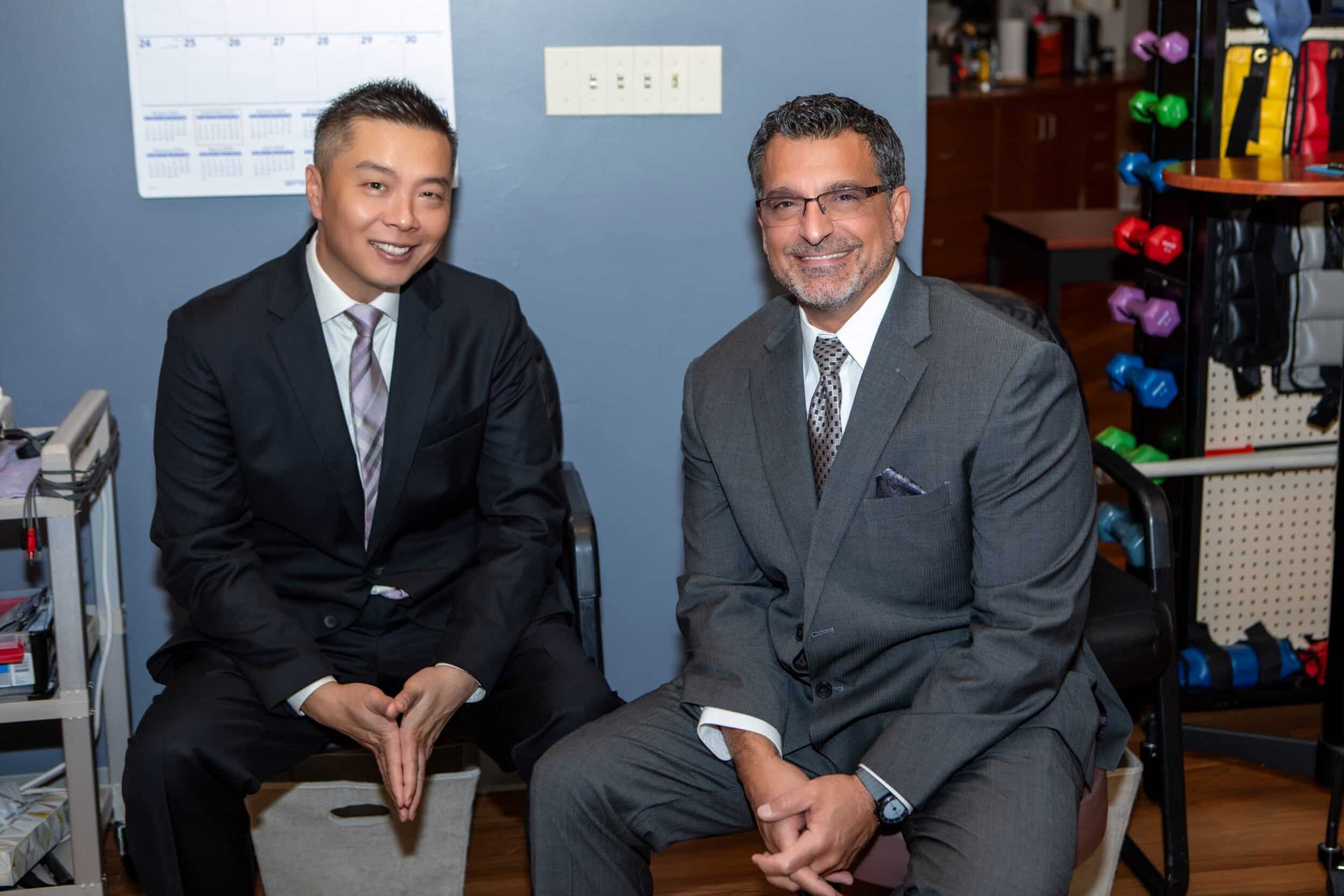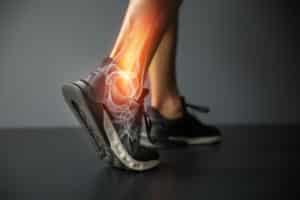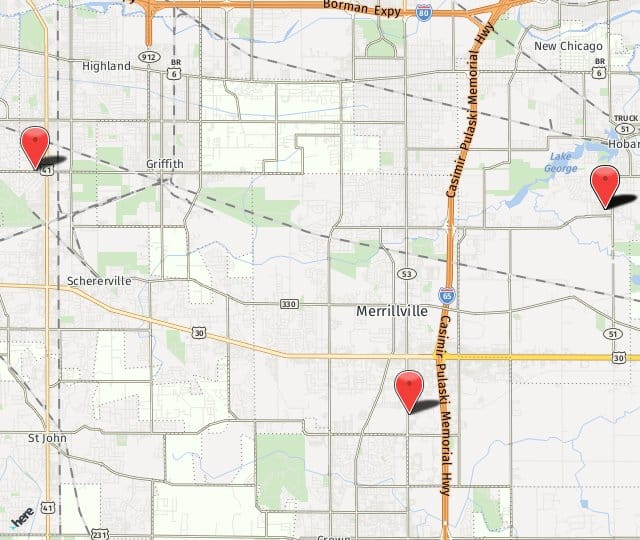Convenient Locations in Highland, Hobart, & Merrillville
Dr. James Hong is a foot and ankle surgeon. He specializes in the diagnosis and treatment of complicated foot and ankle disorders. He also specializes in traumatic ankle and foot fractures, along with tending to normal foot ailments.
When these bones are out of alignment, so is the rest of your body. And interestingly enough women are 4 times more likely to have foot problems than men are, mostly due to footwear. Foot and ankle problems can range from sprained ankles and heel pain to complex issues involving the many nerves that are present in the foot. Our Merrillville doctors treat all issues and injuries involving the foot and ankle with the most innovative treatment techniques including surgical options, injections, orthotics and physical therapy.

Some of the Foot Problems and/or Injuries We Treat Are:
What is the Difference Between an Ankle Sprain and Ankle Fracture?
You were running for a Frisbee and stuck your foot in an unforeseen hole in the turf. You’ve injured your ankle to a degree you cannot put any weight on it. It’s tender to the touch, quickly bruising, and swelling. Did you sprain it or fracture it?
A sprain happens when you damage the ligaments in your ankle. If you roll your ankle dramatically, you’ve strained these bands whose job it is to hold your bones in place and keep your ankle stable. A sprain is either a torn or overly stretched ligament.
If you’ve broken at least one of the three bones in your ankle, that’s a fracture. If you’ve broken a single bone, you may not get the full realization. If you’ve broken two or all three your ankle will lose stability.
What is the Difference Between an Ankle Sprain and an Ankle Strain?
- Noise — Did you hear a crack? Sprains may have a popping sound, but not a crack.
- Misshapen — Is the shape of your ankle not right? This isn’t due to swelling, but overall structure.
- Numbness — If you’ve strained a ligament, you’ll have lots of pain. If you have numbness or tingling, it’s probably a fracture.
- Pain location — If your ankle hurts or is tender to the touch directly over your ankle bone, you probably have a fracture. If the pain is in the soft part of your ankle, it’s more likely a strain.
Is Surgery Required for Ankle Fractures?
If your fractured ankle is stable, meaning the broken bone is not out of place or is just barely out of place, you likely won’t need surgery. Dr. Hong is our Merrillville foot and ankle surgeon at Bone & Joint Specialists, and he will likely perform a stress x-ray to be sure your ankle is stable.
If it is stable, a short cast, a removable brace, or even a high-top tennis shoe could be used.
If your ankle is unstable, or if the fracture is out of place, it’s likely surgery will be needed. Dr. Hong will reposition the bone fragments into their normal alignment. They will be held together with special screws and metal plates attached to the outer surface of the bone. In more severe fractures, a screw or rod inside the bone may be necessary.
Treating Ankle Injuries
Healing an Ankle Fracture
Most simple ankle fractures heal well with immobilization and non-weight bearing activity. They should take from 4-8 weeks for the bones to completely heal. It can take several months to regain full use and range of motion, which will likely involve some physical therapy.

Healing an Ankle Sprain
Ankle sprains are one of the most common musculoskeletal injuries for people of all ages and activity levels. Healing is widely varied depending upon the severity of the sprain. These are graded from grade 1 (minimal stretching, no tearing) to grade 2 (partial tear) to grade 3 (full tear or rupture). A grade 1 sprain will only take 1-3 weeks to heal; a grade 2 strain from 3-6 weeks; and a grade 3 will take several months.
Immediate treatment for a sprained ankle is RICE — rest, ice, compression, and elevation. Rest it as much as possible for 24-48 hours. Use an ice pack or immerse your foot in an ice bath for 15-20 minutes three to five times a day, or until the swelling starts to subside. Compress the ankle with an ace bandage or an elastic ankle sleeve. When seated, elevate the ankle as high as comfortable, at least as high as your hip. Take nonsteroidal anti-inflammatory drugs such as ibuprofen.
What Are Bunions?
A bunion develops on the inside of the foot at the big toe joint. Bunions develop slowly as pressure on the big toe joint causes the big toe to lean toward the second toe. Over time, the normal structure of the bone changes, resulting in the telltale bunion bump.
How Are Bunions Treated?
Most bunions can be treated without surgery. These methods won’t “reverse” the bunion but can reduce pain and keep it from worsening.
- New shoes — Changing footwear is the usual first treatment approach, switching to shoes that don’t compress the toe.
- Padding — Protective pads can help cushion the painful area, but they can also increase pressure, so they may not be helpful.
- Orthotics, etc. — Orthotics (shoe inserts) can be used in your shoes, toe spacers can keep your toes apart, and a night splint can place your big toe in a straighter position.
- Icing — Icing the bunion several times a day for 20 minutes can reduce swelling.
- Medications— Nonsteroidal anti-inflammatory medications relieve pain and reduce swelling.
Bunion Surgery
If the above treatments have been used, but you’re still having problems with pain and even walking, surgery with Dr. Hong could be the answer. Bunion surgery realigns bone, ligaments, tendons, and nerves so that the big toe can be brought back into the correct alignment.
What is a Hammertoe?
A hammertoe is a foot deformity that occurs due to an imbalance in the muscles, tendons, or ligaments that normally hold the toe straight. These occur in the second, third, or fourth toes. Hammertoes are flexible initially and can be corrected with simple measures. But if left untreated they can become fixed and require surgery. They are usually the result of wearing shoes that don’t fit properly, foot structure, or trauma.
How is Hammertoe Treated?
If your toe is still flexible, we may have you change to roomier, more comfortable footwear. We’ll probably also have you wear orthotics or pads in your shoes.
Various exercises for your toes, things such as picking up marbles with your toes, can help to stretch and strengthen your toe muscles.
If these conservative approaches don’t work, Dr. Hong can perform a surgical procedure to release the tendon that’s preventing your toe from lying flat. In some cases, he may also remove a piece of bone to straighten your toe.
What Are Neuromas?
A neuroma, often called “Morton’s neuroma,” is a benign growth of nerve tissue frequently found between the third and fourth toes. It causes pain, a burning sensation, tingling, or numbness between the toes and in the ball of the foot. Patients describe the feeling as “walking on a marble.”
Morton’s neuroma occurs as the nerve passes under the ligament connecting the toe bones in the forefoot. This is 8 to 10 times more likely to develop in women than men.
Patient Testimonials
"Dr. Hong and everyone at Bone and Joint specialists have been above and beyond amazing. They got me an appointment same day after I broke my foot (we had just been driving by and they got us in!) and got me in for surgery next business day. Everyone has been so kind and compassionate. Recommend 10000%"
How Are Neuromas Treated?
Neuromas are treated with changes in footwear, orthotics, or injections of corticosteroids that reduce swelling and inflammation of the nerve.
What is a Bone Spur?
A bone spur is a growth of extra bone that typically develops where two or more bones meet. These bony projections form as the body tries to repair itself. They feel like a hard lump or bump under the skin. Osteoarthritis, where the cartilage between our joints deteriorates, results in bone-on-bone contact and can create bone spurs. On the feet, causes can be injury to the foot, being obese, or wearing overly tight shoes. On the foot, a spur can form on the top of the mid-foot, as a toe spur, or a heel spur. They are also common on the ankle, usually due to former trauma.
Is Surgery Required for Bone Spurs?
Bone spurs are only rarely treated with surgery. This is usually only done on spurs on the top of the mid-foot that are limiting mobility or causing severe pain.
What is Plantar Fasciitis?
Plantar fasciitis is the most common cause of pain on the bottom of the heel. It occurs when the strong band of tissue that supports the arch of your foot becomes irritated and inflamed. The plantar fascia is designed to absorb the high stresses and strains we place on our feet. But is there is too much pressure, this can damage or tear the tissues. The body responds with inflammation, which results in the heel pain and stiffness that is plantar fasciitis.
How is Plantar Fasciitis Treated?
A variety of non-surgical treatments are usually effective in addressing plantar fasciitis. These range from rolling your foot over a cold water bottle or ice for 20 minutes three or four times a day to taking nonsteroidal anti-inflammatory medication.
Stretching your calves and plantar fascia is the most effective way to relieve the pain.
Calf Stretch
Lean forward against a wall with one knee straight and the heel on the ground. Place the other leg in front, with the knee bent. To stretch the calf muscles and the heel cord, push your hips toward the wall in a controlled fashion and hold this for 10 seconds. Repeat this 20 times for each foot.
Plantar Fascia Stretch
In a seated position, cross your affected foot over the knee of your other leg. Grasp the toes of your painful foot and slowly pull them toward you in a controlled fashion. Place your other hand along the plantar fascia. The fascia should feel like a tight band along the bottom of your foot when stretched. Hold the stretch for 10 seconds. Repeat this 20 times for each foot.
Schedule A Consultation With Our Merrillville Foot & Ankle Specialists
To learn more about our Foot & Ankle Treatments, please schedule a consultation with one of our top doctors today! Call us at 219.795.3360 or fill out the form in our contact page. Bone & Joint Specialists are proud to serve Valparaiso, Highland, Merrillville, and Hobart, IN.


